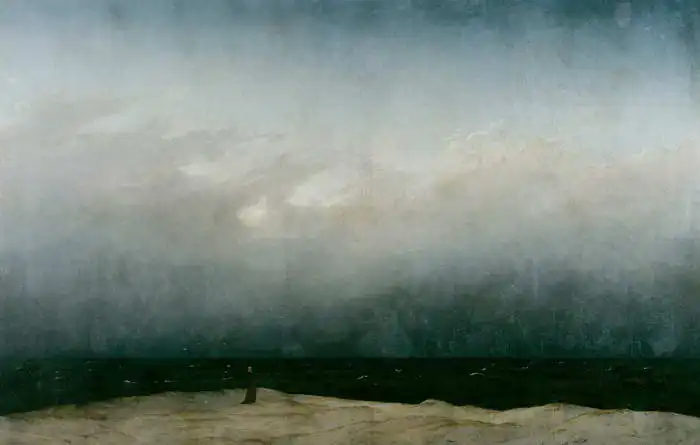About this finishing
Print. The image is printed on the top quality 10-ink HP Z9PS printer on HP matte 270 g / m2 paper. You can choose any size to an accuracy of 1 cm. A margin of 5 cm around the image is added to the size of the motif.


You can find a detailed description about our finishings
here.
The monk at the sea
Date:
1809"The Monk by the Sea" (German "Der Mönch am Meer") is an oil painting by the German
Romantic painter
Caspar David Friedrich . This iconic painting was created in 1809 and is one of the most famous works of Romantic art. The painting "Monk by the Sea" is known for its evocative atmosphere and depiction of nature in connection with human existence.
The painting depicts a lone monk standing on a rocky shore looking out to
sea . The monk is the small center of the picture and creates an impression of vulnerability and loneliness. The sea is captured as a huge, almost endless area that seems to end at the horizon. The sea is calm and quiet, which creates an impression of immense space and silence. The mountains in the background of the picture are mysterious and majestic. The rocks on the coast are also captured in their strength and impersonal eternal character.
Colors are limited to silver, gray and blue shades, which contributes to the image of a cool and calm atmosphere. The painting is characteristic of Friedrich's style of minimalism. The painting "Monk by the Sea" evokes a feeling of melancholy, loneliness and metaphysical reflection. The figure of a monk can symbolize human smallness and distance from infinite nature.
Friedrich painted picture The monk at the sea in 1809. Prevailing color of this fine art print is dark and its shape is landscape. This image is printed on demand - you can choose material, size and finishing.
Caspar David Friedrich (1774-1840) was a German
Romantic landscape painter. Friedrich studied art in Copenhagen. He was disillusioned with the materialist Europe, and like
William Turner and
John Constable, he tried to point to the divine beauty of nature and discourage superficiality, which we see his breath-taking allegorical paintings of nature:
Giant or
Lone Tree. His works served as an inspiration to
Expressionists and
Surrealists . The decline in his popularity after World War II was in part due to the Nazis, who perverted the meaning of his works to favour their nationalistic ideals. Some of his works were destroyed in the fire of the Munich Glass Palace or the bombing of Dresden. Friedrich died in poverty in Dresden on May 7th, 1840, where he was also buried.


